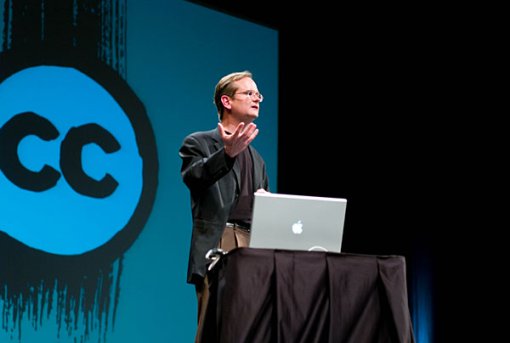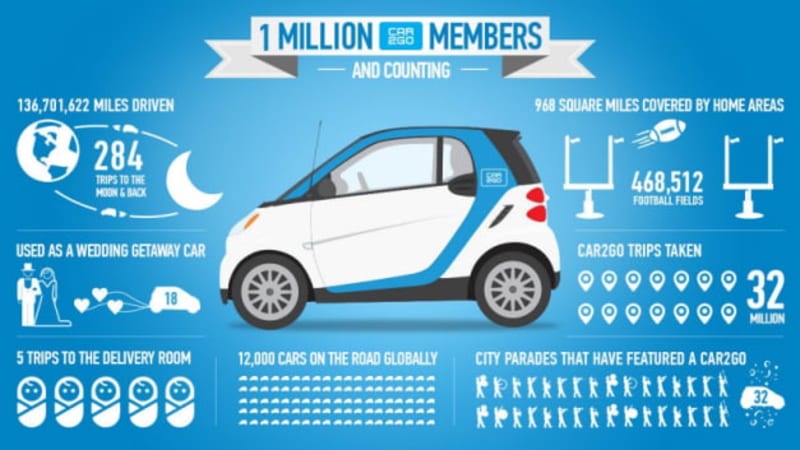List
Story > NEWS > Detail
[Resources] Concept and Form of Shared Economy
The birth of the term "shared economy" dates back to 30 years ago, when the U.S. was experiencing a severe recession, and the unemployment rate exceeded 7 percent in 1985, economists worked hard to find ways to overcome it, and then published a thesis titled "Shared Economy: Conquering stagflation" at Harvard University in 1984.

Professor Martin Witsman described the shared economy as "The Share Economy," which differed in its nuance from the "Sharing Economy," which focuses more on the act of sharing because it used the meaning of a shared economy as a "profit sharing." In other words, the idea of creating a flexible wage system, in which workers' salaries vary depending on the size of corporate earnings, is different in concept from the shared economy, which is technically mentioned in the digital age, as a way to address the rising unemployment rate due to the severe economic downturn.
Then in 2002, digital-based shared economy began to be mentioned in earnest, and professor emeritus Ezanne Mackay of Montreal University did not clearly explain what a shared economy is. He also wrote a mixture of 'Share Economy' and 'Sharing Economy,' but did not give a specific definition of it, although it gave the most recent example of a shared economy being discussed. However, it only expressed that "exchange and shared economies have different characteristics in terms of quality, creativity and cost, and seem to provide different functions to the public."

Since then, it has been Harvard University professor Lawrence Lessig who most specifically defined the meaning of the shared economy, which is still widely known. He defines a shared economy as an economic form defined by a complex combination of social relationships, with a 'commercial economy' on the counterpoint and not defined by price, and especially based on the Wikipedia case, saying, "It works as a contribution to the content itself, not to the purpose of monetary What's important here is that the key to the meaning of the term shared economy he defines is non-monetary factors. Since his definition of a shared economy was announced, he has redefined his definition of a shared economy through the concept of collaborative consumption. This is based on the concept of incorporating ICT into his existing definition, which he describes as a business and related phenomenon that creates new value by sharing personal goods with others based on IT technology, seeing that creating new value through sharing, exchanging and lending access to the goods that he owns with others is the basis for creating new value.

There are three main types of services called shared economy: the general type, the type of work provided or not, and the type of service that is based on whether to seek profit. First, the general types can be divided into 1) the type of product service system that consumes only value in use without owning the product, 2) the type of redistribution market that transfers ownership of personally unserved goods to those in need, and 3) the form of collaborative lifestyles that share tangible and intangible resources with others. Here 1) The form is the view that the product service system provides the product and service owned by a company to consume only the value of use rather than the point of view of sales. Thus, a product service system will result in a change in the mindset that the benefits provided by the product are desired, but ownership is not required, which may result in longer life spans because the life of the product can be extended to shares or leases rather than limited to the length of ownership. 2) The view is that the products that are not needed can be moved and relocated where necessary. It may be provided free of charge in the market it needs, exchanged in other markets or sold in cash. This has the advantage of reducing the amount of waste and the amount of resources consumed to produce new products by reusing or reselling current products without abandoning them. And over time, redistribution will form five Rs (Reduce, Reuse, Recycle, Repair, Redistibute) to enable continued commerce. Finally, the form is the view that people with similar fields of interest form a community that can share and exchange tangible and intangible resources such as time, space, talent, information, knowledge and experience.
This type of sharing is small, such as work space and parking lots, at the local or neighboring level, and the recent development of ICT has expanded beyond the constraints of these physical spaces to create a global network. Examples include loans between individuals and trips between individuals.

Next, there can be two different types of work-related services: manufacturing and service-related. In the case of manufacturing industries, products are produced and supplied, producing and operating inventories of the type of products. However, the service industry can be divided into two types, face-to-face and ICT, depending on the service delivery method, in that it provides intangible services by providing the service. Here, the face-to-face approach is that service demanders receive services from suppliers through a certain form of work, typically including education services and medical services. And the ICT method allows service demanders to receive services through suppliers' ICT systems, typically including financial services such as loan businesses and crowdfunding and various reservation services. And in this case, there are services that serve as intermediaries for information, although service providers may provide services directly through ICT.
Finally, types of profit-seeking can be broadly divided into P2P (Peer to Peer) and B2P (Business to Peer), where For-Profit P2P/Non-Profit P2P and For-Profit BP2/Non-Profit depending on whether the project is pursued or not. P2P refers to transactions between individuals, and therefore increases in sales depend on the increase in the number of transactions, such as airBnB, Coza, etc., the service to rent clothes (open wardrobe), the service to rent space (Space Cloud) and other services to lend an individual's own car (Buzzcar, Ray Rides, etc.). By referring to business models, we try to maximize revenue per transaction, including car-sharing services (ZipCar, Car2go, Green Car, SoCar, etc.) and space services for the benefit of community operations that work with people of common interest in computers, processing, technology, science, digital arts, or public sectors.
In addition, some view is that depending on the type and purpose of a shared economy, an entity may separately lend individually owned idle resources to other entities and share the facilities, equipment, and land owned by individual entities for use when they are idle, and the intellectual property rights secured by individual entities may be used by others.
The birth of the term "shared economy" dates back to 30 years ago, when the U.S. was experiencing a severe recession, and the unemployment rate exceeded 7 percent in 1985, economists worked hard to find ways to overcome it, and then published a thesis titled "Shared Economy: Conquering stagflation" at Harvard University in 1984.
Professor Martin Witsman described the shared economy as "The Share Economy," which differed in its nuance from the "Sharing Economy," which focuses more on the act of sharing because it used the meaning of a shared economy as a "profit sharing." In other words, the idea of creating a flexible wage system, in which workers' salaries vary depending on the size of corporate earnings, is different in concept from the shared economy, which is technically mentioned in the digital age, as a way to address the rising unemployment rate due to the severe economic downturn.
Then in 2002, digital-based shared economy began to be mentioned in earnest, and professor emeritus Ezanne Mackay of Montreal University did not clearly explain what a shared economy is. He also wrote a mixture of 'Share Economy' and 'Sharing Economy,' but did not give a specific definition of it, although it gave the most recent example of a shared economy being discussed. However, it only expressed that "exchange and shared economies have different characteristics in terms of quality, creativity and cost, and seem to provide different functions to the public."

Since then, it has been Harvard University professor Lawrence Lessig who most specifically defined the meaning of the shared economy, which is still widely known. He defines a shared economy as an economic form defined by a complex combination of social relationships, with a 'commercial economy' on the counterpoint and not defined by price, and especially based on the Wikipedia case, saying, "It works as a contribution to the content itself, not to the purpose of monetary What's important here is that the key to the meaning of the term shared economy he defines is non-monetary factors. Since his definition of a shared economy was announced, he has redefined his definition of a shared economy through the concept of collaborative consumption. This is based on the concept of incorporating ICT into his existing definition, which he describes as a business and related phenomenon that creates new value by sharing personal goods with others based on IT technology, seeing that creating new value through sharing, exchanging and lending access to the goods that he owns with others is the basis for creating new value.

There are three main types of services called shared economy: the general type, the type of work provided or not, and the type of service that is based on whether to seek profit. First, the general types can be divided into 1) the type of product service system that consumes only value in use without owning the product, 2) the type of redistribution market that transfers ownership of personally unserved goods to those in need, and 3) the form of collaborative lifestyles that share tangible and intangible resources with others. Here 1) The form is the view that the product service system provides the product and service owned by a company to consume only the value of use rather than the point of view of sales. Thus, a product service system will result in a change in the mindset that the benefits provided by the product are desired, but ownership is not required, which may result in longer life spans because the life of the product can be extended to shares or leases rather than limited to the length of ownership. 2) The view is that the products that are not needed can be moved and relocated where necessary. It may be provided free of charge in the market it needs, exchanged in other markets or sold in cash. This has the advantage of reducing the amount of waste and the amount of resources consumed to produce new products by reusing or reselling current products without abandoning them. And over time, redistribution will form five Rs (Reduce, Reuse, Recycle, Repair, Redistibute) to enable continued commerce. Finally, the form is the view that people with similar fields of interest form a community that can share and exchange tangible and intangible resources such as time, space, talent, information, knowledge and experience.
This type of sharing is small, such as work space and parking lots, at the local or neighboring level, and the recent development of ICT has expanded beyond the constraints of these physical spaces to create a global network. Examples include loans between individuals and trips between individuals.

Next, there can be two different types of work-related services: manufacturing and service-related. In the case of manufacturing industries, products are produced and supplied, producing and operating inventories of the type of products. However, the service industry can be divided into two types, face-to-face and ICT, depending on the service delivery method, in that it provides intangible services by providing the service. Here, the face-to-face approach is that service demanders receive services from suppliers through a certain form of work, typically including education services and medical services. And the ICT method allows service demanders to receive services through suppliers' ICT systems, typically including financial services such as loan businesses and crowdfunding and various reservation services. And in this case, there are services that serve as intermediaries for information, although service providers may provide services directly through ICT.
Finally, types of profit-seeking can be broadly divided into P2P (Peer to Peer) and B2P (Business to Peer), where For-Profit P2P/Non-Profit P2P and For-Profit BP2/Non-Profit depending on whether the project is pursued or not. P2P refers to transactions between individuals, and therefore increases in sales depend on the increase in the number of transactions, such as airBnB, Coza, etc., the service to rent clothes (open wardrobe), the service to rent space (Space Cloud) and other services to lend an individual's own car (Buzzcar, Ray Rides, etc.). By referring to business models, we try to maximize revenue per transaction, including car-sharing services (ZipCar, Car2go, Green Car, SoCar, etc.) and space services for the benefit of community operations that work with people of common interest in computers, processing, technology, science, digital arts, or public sectors.
In addition, some view is that depending on the type and purpose of a shared economy, an entity may separately lend individually owned idle resources to other entities and share the facilities, equipment, and land owned by individual entities for use when they are idle, and the intellectual property rights secured by individual entities may be used by others.



